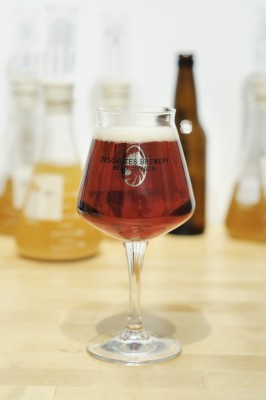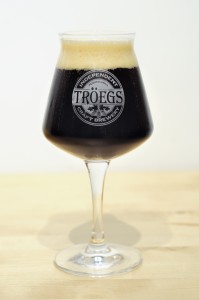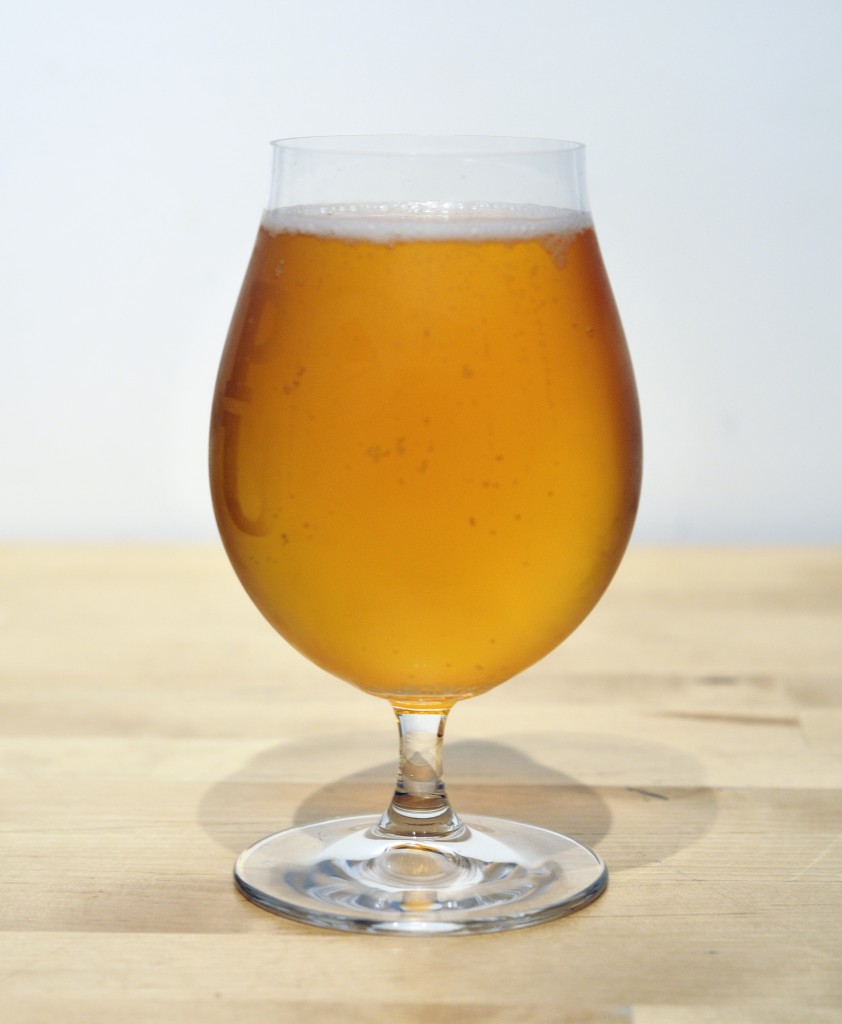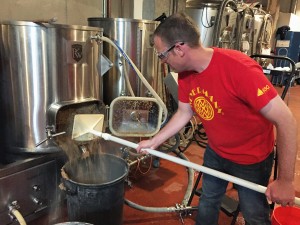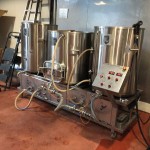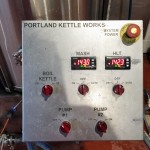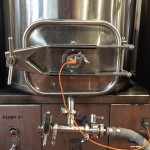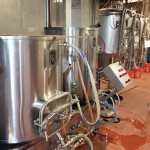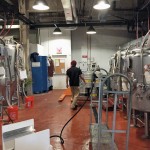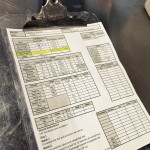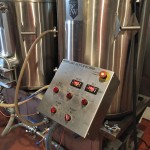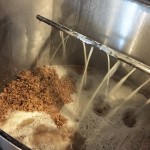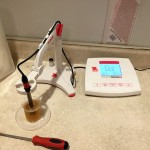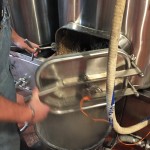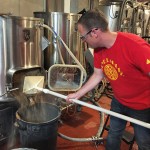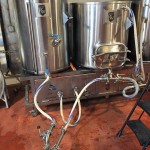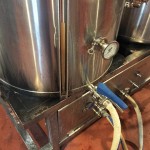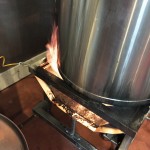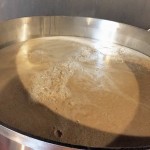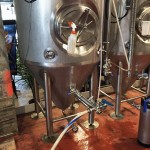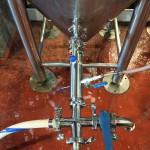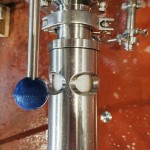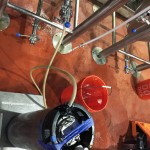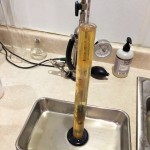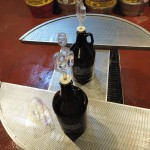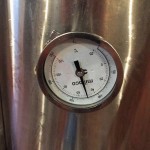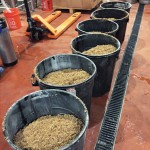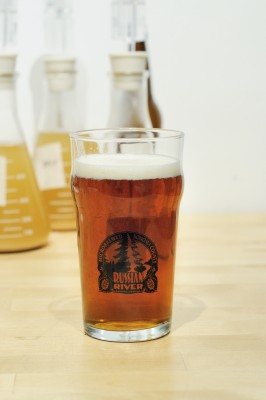 How time flies! My apologies for the radio silence over the past two months. Between moving apartments, a trip to CBC, the announcement of a brewery that I’ve working on, and an awesome trip to Asheville, NC, things have been crazy! More information on all of those things to come, but in the meantime, here’s a quick post about my latest batch of Vienna Lager. Cheers!
How time flies! My apologies for the radio silence over the past two months. Between moving apartments, a trip to CBC, the announcement of a brewery that I’ve working on, and an awesome trip to Asheville, NC, things have been crazy! More information on all of those things to come, but in the meantime, here’s a quick post about my latest batch of Vienna Lager. Cheers!
It’s a little baffling to realize that this is the fifth iteration of Vienna Lager which I have brewed. Not only does this make me do a double take in terms of realizing how much I’ve brewed over the past 6.5 years (over 150 batches and counting), but also illustrates how much I love this style.
Considering the number of different batches I brew, the breadth of styles that I have attempted to master, and the period of time that a lager like this occupies my fermentation space, it speaks volumes about the amount of respect I give a humble beer like this.
In many ways, Vienna Lager is the perfect beer for my tastes. I find it somewhat intangible trying to pinpoint why I love this beer as much as I do. It circumvents reason and defies cogent prose, but the closest I can get to describing why I enjoy this beer so much has to do with malt’s ability to be delicate and nuanced, while maintaining a quenching minimalistic lager dryness and boundless sessionability.
Being the constant tinkerer that I am, I made a couple tweaks over previous versions of this beer. As time has progressed, I’ve consistently lowered the amount of crystal malt in this beer. This version eschews crystal malts completely, making the beer a pure expression of the high-quality German base malts of which it is solely comprised.
Vienna Lager 5.0 Recipe
Specifications:
Size: 3.25gal
Efficiency: 76%
Attenuation: 76.0%
Original Gravity: 1.052
Terminal Gravity: 1.013
Color: 13.35 SRM
Alcohol: 5.21% ABV
Bitterness: 23.0 IBUs
Malt Bill:
4lb (61.0%) Weyermann Vienna Malt
1lb (15.2%) Weyermann Pilsner Malt
1.5lb (22.9%) Weyermann Munich TYPE II
1oz (1.0%) Weyermann Carafa® TYPE II
Mash Profile:
144°F – 30m
151°F – 30m
170°F – 5m
Water Treatment:
Extremely Soft NYC Water
2g Gypsum (to mash)
4g Calcium Chloride (to mash)
Hopping:
42g Hallertauer Mittelfrüher (2.7% AA) – 60m
Kettle Additions:
0.5ea Whirlfloc Tablets (Irish moss) – 15m
0.5tsp Wyeast Nutrient – 10m
Yeast:
White Labs WLP833 German Bock Lager – Decanted 2L Starter on Stir Plate
Tasting Notes:
Judged as 2015 BJCP Category 7A Vienna Lager.
Aroma (10/12):
Bready malt wafts from the glass accompanied by complimentary amounts of toasty crust and just a hint of toffee. There is some slight malt sweetness coming through on the nose. There isn’t any real apparent fermentation character, although there is a touch of grape-like fruitiness. It is unclear if this is a fermentation by-product or coming from the Munich malt. No apparent hop aroma.
Appearance (3/3):
Medium copper color with pristine clarity. Tightly spaced, off-white bubbles form a great foam cap which persists.
Flavor (17/20):
Beautifully balanced malt with nuanced layers of toasty malt and just a hint of caramel or toffee. The malt is balanced far more towards toasty and dry rather than sweet and caramel-rich. A touch of hop bitterness balances out the slight perception of sweetness attributed to the malt. Exceptionally clean lager fermentation with no hints of alcohol, ester, or diacetyl.
Mouthfeel (5/5):
Medium to medium-low bodied with moderate carbonation. Soft and round with no perceptible astringency.
Overall Impression (9/10):
This is a beautiful, clean malty beer without being overwhelmingly melanoidin-rich or overbearingly complex. The beer finishes clean and dry making it a crushable pint. Dropping out the crystal malt only seems to have enhanced the beer as the base malts are still capable of producing some perception of caramel flavors without any of the associated sweetness or contributions of unfermentable sugars. This beer is a great alternative to Octoberfest beers which offer a great malt richness, but can often be a touch overbearing in terms of fullness and alcohol.
Excellent (44/50)

